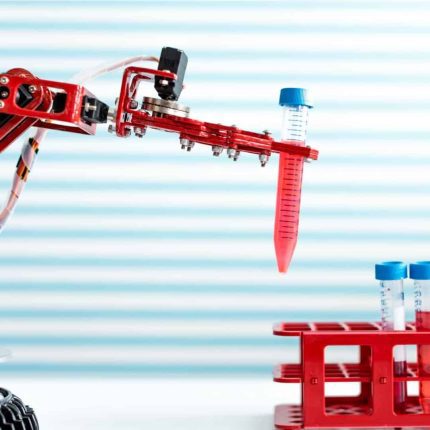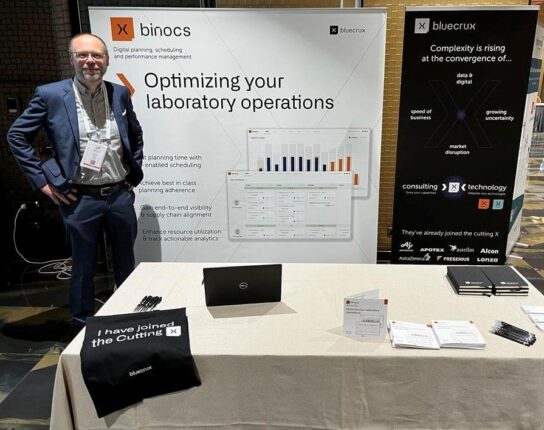
Towards a paperless future: the path to lab automation
Going “paperless” is about more than simply converting paper-based processes into digital counterparts; it requires a strategic and holistic approach that embraces intelligent digital transformation. In this blog post, we will explore the critical steps and offer guidance to lab managers on navigating this transformative journey towards a paperless future.
In a rush? Here are the 3 key takeaways
- 👉 Going paperless is about more than simply digitalizing old, paper-based processes
- 👉 Beyond developing electronic processes, labs can move further towards full digitalization by implementing first heuristic, rules-based processes, and then by introducing more AI-enhanced systems where appropriate
- 👉 Binocs is already an AI-enhanced solution that represents a critical pillar in the laboratory digital ecosystem
In the fast-paced world of pharmaceutical QC and R&D labs, lab managers face the pressing need to optimize operations, enhance efficiency, and drive innovation. The journey towards achieving a fully paperless laboratory is not a one-size-fits-all approach. Each lab is unique, with a multitude of processes at varying stages of digitalization and automation; below is a brief overview of the steps to get from pen and paper to full, end-to-end digitalization.

Step 1: Paper processes–a starting point
Traditionally, labs relied on manual, paper-based processes that were time-consuming, error-prone, and lacked efficiency. Today, lab managers acknowledge that going paperless begins with digitizing those manual processes.
Most modern labs have already started transitioning to electronic systems, at least in some of their core processes. By implementing laboratory information management systems (LIMS) and electronic lab notebooks (ELNs), for instance, lab managers lay the foundation for future advancements and bring improved data management and analysis capabilities, setting the stage for the next phases of digital transformation.
Step 2: Evolving electronic solutions
Moving beyond paper is a significant leap but, by embracing electronic tools such as Microsoft Excel or specialized software, only the act for recording and retrieving the necessary information is digitized—most of what happens in between still tends to be a manual, human-led process.
Many labs get stuck on this step, mistakenly believing that simply digitizing the old methods is the end-goal of going paperless. While these tools certainly introduce efficiencies, reduce unnecessary duplication of effort, and afford better data handling, it is crucial to evaluate them critically and identify areas for further optimization and automation. Lab managers should seek opportunities to streamline workflows, eliminate manual inputs, and enhance data integration.
Step 3: Embracing heuristic rules and automation
As labs progress on their digital transformation journey, lab managers should harness the power of heuristic rules. These user-defined processes enable the automation and optimization in specific areas of lab operations, and elevate electronic tools by manipulating the stored data to generate new insights. With a rules-based system, labs can automate routine tasks, minimize human error, and drive operational efficiency. Lab managers should identify areas where heuristic rules can be applied effectively, such as sample tracking, campaign management, and reporting, to elevate the performance of their lab teams.
It is important to note that achieving complete automation in every process may not be feasible or necessary. The focus should be on streamlining and optimizing critical processes to enhance productivity and data integrity.
Step 4: Leveraging AI-enabled technologies:
The frontier of intelligent digital transformation lies in the integration of AI-enabled technologies. Lab managers should explore the potential of AI algorithms and machine learning to unlock new levels of efficiency, accuracy, and innovation. These technologies can analyze vast amounts of data, identify patterns, and optimize processes. Lab managers should identify areas where AI can bring significant value, such as resource allocation, predictive maintenance, experimental design, and data analysis. By embracing AI, labs can make data-driven decisions, accelerate research, and drive transformative outcomes.
Lab managers hold the key to unlocking the full potential of a paperless laboratory through intelligent digital transformation. It is essential to recognize that the journey towards a fully automated lab is multifaceted and incremental. By going beyond the digitization of paper processes and embracing intelligent digital transformation, labs can streamline operations, elevate efficiency, and foster a culture of innovation. Remember, the goal is not 100% automation in every process, but rather to strategically and intelligently digitize, optimize, and elevate your lab’s performance in the pursuit of scientific excellence.
At Binocs, we’re proud to be a resolutely Step 4 solution, offering an AI-enhanced advanced scheduling algorithm, supported by a comprehensive suite of heuristic operations for capacity, campaign, and data management. Embrace the power of heuristic rules and AI-enabled technologies to propel your lab towards greater productivity and success—contact us today for a personalized tour of the system!



